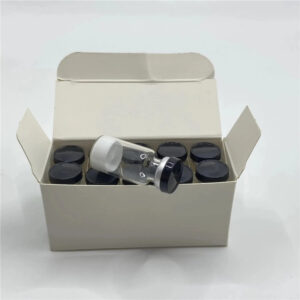Buy Acetyl Hexapeptide-3 (Argireline) 200mg (Topical)
Acetyl Hexapeptide-3, commonly referred to as Argireline, is a synthetic peptide fragment derived from the SNAP-25 protein, a component associated with the SNARE complex. This protein assembly plays a role in neurotransmitter release, particularly acetylcholine, which is linked to muscle contractions. Argireline is structurally similar to part of SNAP-25, which has drawn scientific interest due to its potential research applications.
Alternative Names: Argireline, Argireline Acetate, Acetyl Hexapeptide
Acetyl Hexapeptide-3 Studies and Research Data
Investigations into Skin Structure and Wrinkling
Research has suggested that Acetyl Hexapeptide-3 may play a role in supporting extracellular matrix proteins such as collagen. Some laboratory findings have indicated a potential for this peptide to influence wrinkle depth and appearance, possibly through interactions with the proteins that contribute to skin firmness. In vitro and topical model studies have noted varying observations, ranging from minimal to more pronounced outcomes when examining surface lines and creases.
Specifications
- Sequence: Ac-Glu-Glu-Met-Gln-Arg-Arg-NH2
- Molecular Formula: C34H60N14O12S
- Molecular Weight: 888.99 g/mol
- Synonyms: Acetyl hexapeptide, Argireline, Argireline Acetate
Acetyl Hexapeptide-3 Research on Hydration and Barrier Function
Some studies have focused on the relationship between Acetyl Hexapeptide-3 and skin hydration. Experimental results indicated a reduction in transepidermal water loss (TEWL) following exposure, suggesting a possible role in maintaining skin barrier integrity and water retention in tissue models.
Acetyl Hexapeptide-3 Studies on Muscle Activity and Neurotransmission
Acetyl Hexapeptide-3 has also been studied in relation to muscle twitching. Data from certain research models propose that the peptide may interact with mechanisms involving neurotoxins, potentially prolonging their activity. In one experiment, exposure to both the peptide and a neurotoxin was associated with a delayed return of twitching activity compared to neurotoxin-only groups, though the differences were not statistically significant.
Structural Modifications and Research Expansion
Researchers have experimented with modifying Acetyl Hexapeptide-3 by attaching palmitic acid, resulting in a compound known as Palmitoyl Hexapeptide-3. In murine studies focused on pain research, this modified peptide was linked to potential changes in pain sensitivity, including reduced hyperalgesia and allodynia. Scientists have proposed that the modification may stabilize the peptide within neuronal membranes and influence TRPV1 channel behavior, both of which are relevant in nociceptive signaling.
Conclusion
Acetyl Hexapeptide-3 (Argireline) has been the subject of research across several domains, including skin structure, hydration, neuromuscular activity, and experimental peptide modifications.
How to Order Online
-
Visit ChemicalDepotllc.com
-
Search for “Argireline” and add it to your cart.
-
Proceed to secure checkout.
-
Choose your preferred payment method.
-
Receive confirmation and shipment tracking via email.
We ensure data privacy through SSL encryption and secure payment gateways.
Important Note
All product applications should remain in the context of in vitro studies only. It is not approved for human or animal use, and any bodily introduction is strictly prohibited.





Reviews
There are no reviews yet.